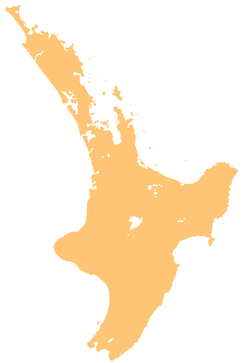Hobbiton Movie Set
| Hobbiton | |
|---|---|
| Movie Set / Tourist Attraction | |
| Hobbiton's location within the North Island | |
| Coordinates: 37°51′27″S 175°40′47″E / 37.85750°S 175.67972°ECoordinates: 37°51′27″S 175°40′47″E / 37.85750°S 175.67972°E | |
| Country | New Zealand |
| Region | Waikato |
| Territorial authority | Matamata-Piako District |
The Hobbiton Movie Set was a significant location used for The Lord of the Rings film trilogy and The Hobbit film series. It is situated on a family run farm about 8 kilometres (5.0 mi) west of Hinuera and 10 kilometres (6.2 mi) southwest of Matamata, in Waikato, New Zealand, and is now a Tolkien tourism destination, offering guided tours of the set.
The underlying geology of the area is that of the Hinuera Formation, a group of alluvial silts, sands and gravels laid down in the last glacial period. Originally largely marshland, it was transformed in the 19th century by a large-scale drainage scheme and is now fertile agricultural land that is also a major racehorse breeding area.
The Alexander family moved to the 500-hectare (1,200-acre) property of rolling grassland where the set is located in 1978. Since then it has been a livestock ranch with 13,000 sheep and 300 Angus beef cattle. The main sources of income from farming are mutton, wool and beef.
When Peter Jackson began to look for suitable locations for The Lord of the Rings film series he first saw the Alexander Farm during an aerial search in 1998 and concluded that the area was "like a slice of ancient England". Set Decorator Alan Lee commented that the location's hills "looked as though Hobbits had already begun excavations". Part of the site has a lake with a long arm that could double as a river.
After suitable negotiations with the owners, work commenced in transforming part of the farm into sets for Hobbiton and other parts of J. R. R. Tolkien's Shire in March 1999. The New Zealand Army brought in heavy equipment to make 1.5 kilometres (0.93 mi) of road into the site from the nearest highway and initial ground works. Further work included building the facades for 37 hobbit holes and associated gardens and hedges, a mill and double arch bridge, and erecting a 26-tonne (29-ton) oak above Bag End that had been growing near Matamata and which was cut down and recreated on site complete with artificial leaves. Thatch on the pub and mill roofs was made from rushes growing on the farm. Generators were installed and water and sewerage also had to be considered. Catering was made available for up to 400 cast, crew and visitors per day.
...
Wikipedia

